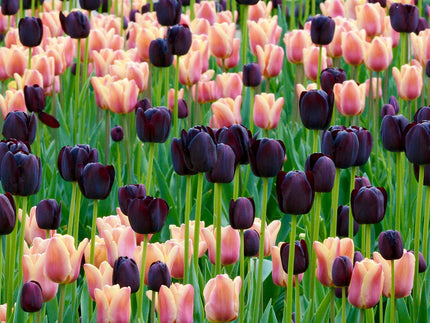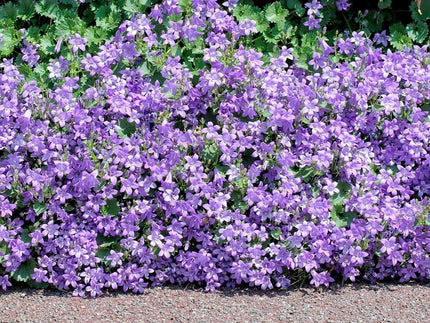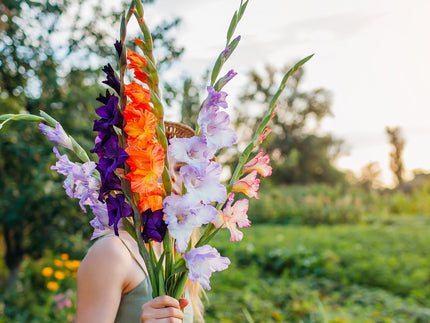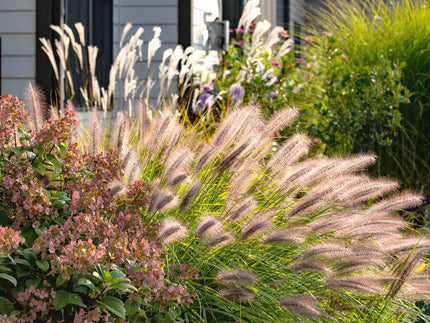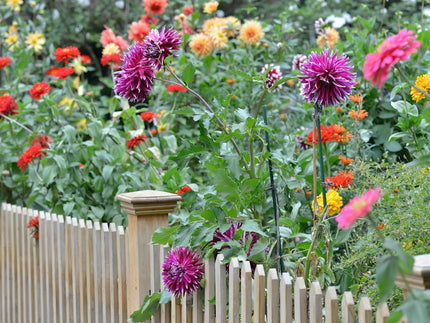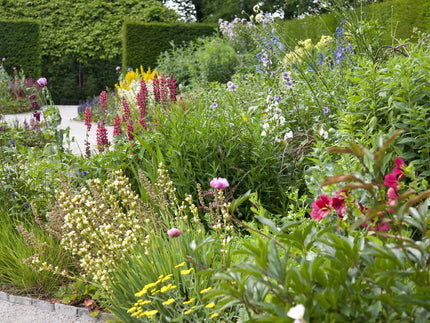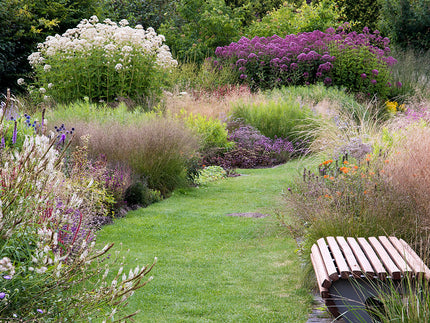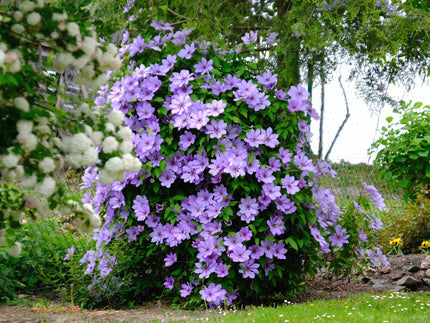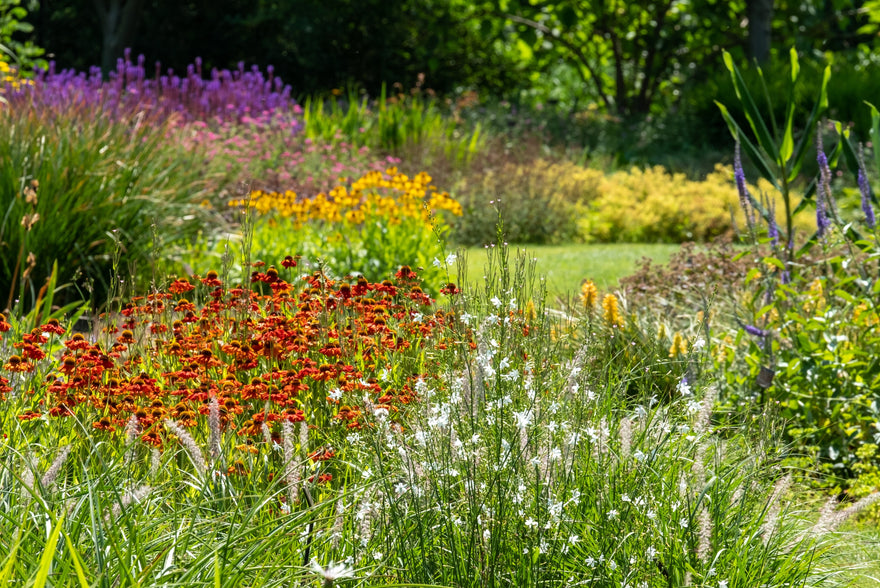
UK garden trends for 2026
Every year British gardens quietly evolve—new shades of flowers and plants take over the socials, seed trays appear on windowsills earlier than ever, and the word sustainable crops up in almost every gardener’s conversation. But the direction for 2026 feels particularly meaningful. It’s less about novelty and more about depth—deeper planting, deeper roots, and deeper connections between gardener, soil and nature.
Across the UK, the gardens that stand out in 2026 won’t necessarily be the largest or most manicured, but the ones that feel alive. Think abundant layers of flower bulbs and perennials, natural shapes, wilder textures and subtle colour transitions that shift beautifully with the seasons. Here’s what’s growing on us for the year ahead.

Planting with purpose
The biggest trend isn’t a plant—it’s a mindset. 2026 gardening is all about purposeful planting: creating spaces that do good as well as look good. Pollinator-friendly varieties, long-lived perennials, and flowering bulbs that feed early bees are top of the list.
Gardeners are thinking of their borders as mini ecosystems rather than floral displays. A patch of earth planted with tulips, alliums, echinacea and ornamental grasses becomes a year-round habitat for insects and birds, and a feast for the eyes too. Whether you’re working with a window box or an entire back garden, the aim is the same: beauty that benefits nature. Compost heaps, rain-water collection, and wildlife-friendly planting are now seen as design features, not afterthoughts. The stylish UK garden in 2026 is the one that quietly hums with life.

Bulbs are back in a big way
Bulbs are timeless, of course, but 2026 sees them taking centre stage again, used more creatively than ever. Gone are the days when they were planted in rigid rows or kept to separate spring beds. This year, bulbs are being woven through borders, tucked between perennials, even planted in layers for a longer, more dynamic display.
Tulips, daffodils, alliums and lilies remain the classics, but gardeners are experimenting with unusual colours and forms—coppery tones, dusky pinks, near-black varieties, and late-flowering types that stretch the season into early summer. The goal? A garden that starts strong in March and doesn’t lose momentum by May. And because bulbs are low-maintenance and easy to plant en masse, they’re perfect for busy gardeners who still want that magical moment when everything bursts into bloom.
(Just remember: tulips don’t return year after year, so think of them as the spring fireworks that make way for your longer-lasting perennials)
Perennials take the long view
If bulbs bring the drama, perennials bring the soul. 2026 continues the shift towards resilient, low-input gardening, where long-lived plants form the backbone of a border. Expect to see more drought-tolerant, wildlife-friendly perennials taking root across UK gardens — echinacea, salvia, verbena, hosta, and ornamental grasses among them. They’re planted not just for their flowers but for their texture and movement, carrying interest well beyond the main flowering period.

This trend ties in neatly with changing weather patterns. With hotter, drier summers and unpredictable winters, perennials that can cope with a range of conditions are becoming the gardener’s best allies. Once established, they’re steady, rewarding, and keep your garden feeling full even in leaner months. It’s also about emotional sustainability: planting something that will still be there next year, growing a little stronger with time, brings a sense of calm continuity that’s very 2026.
Relaxed design, natural rhythm
We’re finally letting go of overly tidy gardens. The trend now is for relaxed planting, a slightly wild look where plants intermingle and self-seed naturally. British gardeners are realising that a few imperfections—a stray foxglove here, a wobbly allium there—add personality and authenticity. Borders are being designed to look good in every stage, from the first bulb shoots to the sculptural seed heads of perennials in winter. Texture and contrast matter more than symmetry. Foliage colour is just as important as flower colour.

Soft ornamental grasses, airy perennials and bold spring bulbs work together to create movement and depth. Think meadows rather than manicured lawns; patchwork planting instead of strict geometry. This trend also reflects a broader cultural shift—we’re valuing comfort over perfection, flow over control, and the quiet joy of watching things grow at their own pace.
Gardening for climate resilience
By now, it’s clear that British weather isn’t quite what it used to be. So another defining trend for 2026 is climate-smart gardening—choosing plants that thrive even when conditions swing from soggy to scorching. Gardeners are improving soil health through mulching and composting, planting deeply to retain moisture, and mixing species with different tolerances to hedge their bets. Bulbs, with their underground storage organs, cope well with variable conditions, while many perennials such as sedum, achillea and echinacea handle heat and drought better than traditional bedding plants.

The practical side of this trend is also about saving effort and water. Once a perennial bed is established, it needs less irrigation and less re-planting each year. It’s gardening that’s both future-proof and beautifully sustainable.
Garden colour palettes for 2026
Trends in colour come and go, but 2026 brings a gentle return to natural, moody tones inspired by the British landscape itself. Expect soft creams and greens, dusky mauves, coppery oranges and deep plums, with pops of brighter colour from tulips or dahlias for contrast. Rather than a riot of hues, gardens are favouring harmonious combinations—colours that shift subtly through the seasons. Pale bulbs in spring give way to richer, more velvety perennials by midsummer, then to warm, faded seed heads in autumn. It’s a more thoughtful, layered approach that feels both artistic and timeless.
Small gardens, big ideas
Not everyone has sweeping borders, and the trends for 2026 reflect that. Container gardening is booming—pots filled with bulbs beneath and perennials above, giving long-season interest in small spaces. Compact varieties of favourite plants make it easy to follow the same principles on patios and balconies. Vertical planting, clever layering, and choosing plants that earn their keep (by flowering for months or attracting wildlife) all help to make smaller gardens feel generous and full. The idea is to work smarter, not bigger: a single container of tulips followed by late-flowering salvias can capture the whole spirit of the season in one corner.

The joy of seasonal rhythm
At the heart of it all, 2026 gardening is about living with the seasons rather than against them. There’s a growing appreciation for the full rhythm — the anticipation of planting bulbs in autumn, the thrill of spring colour, the lush growth of summer, and the quiet rest of winter. Gardeners are rediscovering the pleasure of delayed gratification: knowing that what you plant now will reward you months later. It’s a slower, more mindful kind of gardening and perhaps that’s why bulbs and perennials suit it so perfectly. They remind us that good things take time, that roots matter, and that the most beautiful displays often begin underground.
Looking ahead
So, what defines the UK garden in 2026? A sense of purpose, natural beauty, and quiet confidence. Bulbs bring early light, perennials bring endurance, and together they form a tapestry that celebrates the living landscape of Britain, buzzing, breathing, ever-changing.
Whether you’re planning a full border renovation or just a few new pots for the patio, now’s the moment to think ahead. Autumn is for planting dreams. And as every seasoned gardener knows—the future always starts with a bulb and a bit of faith in the soil.




















































































































































































































